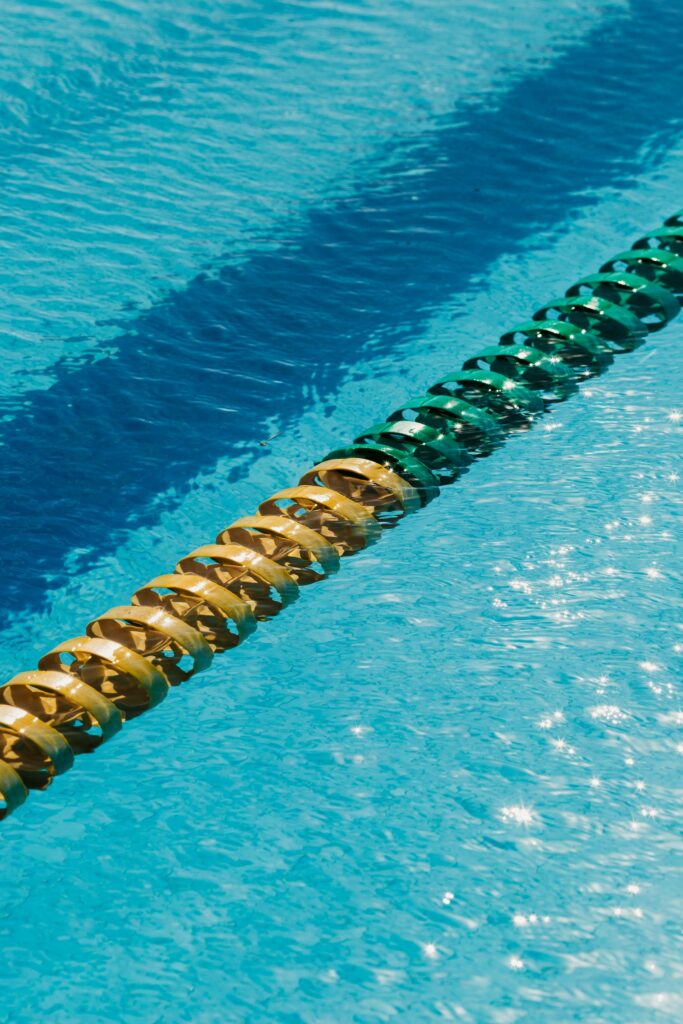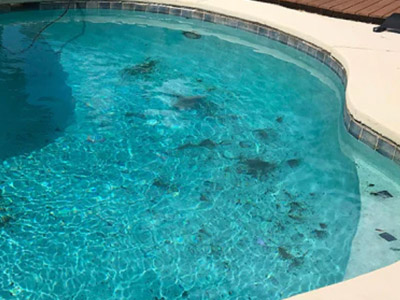How to Deal With Black Algae in Your Pool
Have you noticed black spots or small clusters of black discoloration along your pool grout? Maybe some stains along the walls or floors of your swimming pool? Your pool may be a breeding ground for black algae.
Black algae can develop seemingly out of nowhere and wind up being incredibly hard to get rid of. Understanding the cause of black algae, as well as effective ways to prevent and manage it can help keep pools looking clean and well cared for.
What causes black algae in the pool?
When algae chooses to make its home within the walls of your pool, there are usually a few factors that the growth can be attributed to. Below we’ve outlined some of the most common reasons why your pool may be encountering unexpected algae growth.
The pH balance is too high
One of the primary reasons for the development of small black dots is improperly balanced pH levels in the pool water. When these levels are off, both green algae, black algae, and other types of swimming pool algae are able to develop and prosper within chlorine pools. For best results, pool owners should try to sustain a pH level of 7.2 and 7.6 to avoid any unnecessary issues.
Low chlorine levels are a common cause

In addition to the pH levels, there are some other aspects of your pool water chemistry that need to be monitored in order to avoid any unwanted pool algae. Low chlorine levels can be another leading factor as to why algae is forming within the pool.
Chlorine’s primary purpose within swimming pools is to act as a powerful disinfectant, preventing the growth of bacteria, as well as stifling any potential for algae to take root within your clean pool. Be sure to test chlorine levels regularly to ensure that chemical treatment levels are maintained.
Related Article: How Much Chlorine to Add in Your Pool
The interior of the pool is worn
With frequent use and age, pool surfaces can become worn and degrade with time. Once these porous surfaces are exposed, algae and other bacteria can easily attach itself and begin to grow. To keep unwanted growth at bay, be sure to keep up with the appropriate pool maintenance, repairing or replacing worn surfaces when possible.
How to get rid of black algae in the pool
Regardless of how hard homeowners try to maintain their swimming pools, keeping a regular pool maintenance schedule, and doing regular cleanings, there is the almost inevitable possibility that black spots will begin to form at one point or another.
So how does one go about removing black algae once it begins to form? Below we’ve listed out our tried and true methods for dealing with hard-to-kill black algae.
Brush the interior of the pool
Adding chemicals specially crafted to be an effective black algae killer is only part of the solution. Using a brush to scrub the interior of the pool, dislodging the deep roots made around where the algae has begun to form will help dislodge the growth and expose the entirety of the cluster of algae to the intended treatments.
Shock your pool
The process of shocking pool water involves rapidly raising the chlorine levels for a short period to effectively kill algae and other contaminants. For the best results, be sure to follow the manufacturer’s instructions carefully when adding shock treatment to your pool. Once the shock is introduced to the water it is important to ensure proper circulation to distribute the shock evenly.
Vacuum the pool
Once the algae has been scrubbed and introduced to the shock treatment, the final step will be to vacuum the floor of the pool. Due to the shock treatment, dirt and other contaminants fall to the bottom, waiting to be sucked up by a pool vacuum, restoring both clarity and water sanitation.
Making sure black algae does not appear again
Now that the algae has been removed from the pool walls and flooring, it is important to implement a set of precautionary measures to prevent any future algae growth. Below are some of the best ways to protect the integrity of your pool and preserve the clarity of your water.
Test your water
A key part of sustaining a clean, crystal clear pool is by routinely monitoring your pool’s water by collecting pool water samples. Testing to be sure that pH levels or salt and chlorine levels are normal is going to be a primary way to keep the book both looking clean and running smoothly.
Run your pump on a regular basis
Stagnant water is the perfect environment for bacteria, mold, insect larvae, and algae to thrive. To avoid unwanted contaminants, be sure that your pump is running regularly with the appropriate power to adequately circulate your pool.
Related Article: How to Clean a Pool Filter the Right Way
Maintain a pool cleaning routine
Regardless of how well the pool is maintained, it is important to avoid buildup by cleaning the pool periodically. Manually scrubbing the walls and floor can help maintain water clarity and prolong the life of your pool siding. Lastly, regularly check and clean the pool filter to ensure that dirt and debris are not clogging the filter and negatively impacting its ability to clean your water.
For black algae removal tips, contact GPS Pools
Grab your bathing suits and pool toys and get ready for the perfect pool season! Here are GPS Pools, we’re thrilled to be your primary source for both helpful pool advice and practical equipment such as pool pumps and chlorine tablets.
Need help establishing a maintenance routine? Not sure what your pool needs? We have you covered! Visit our website or stop by one of our in person locations for more information.

